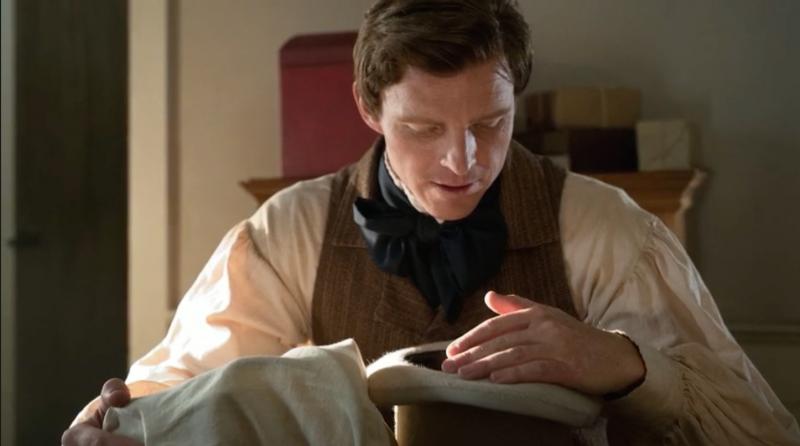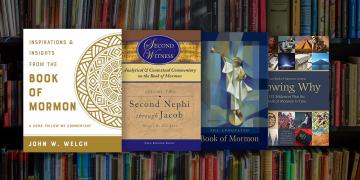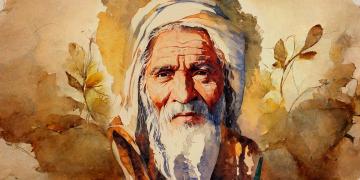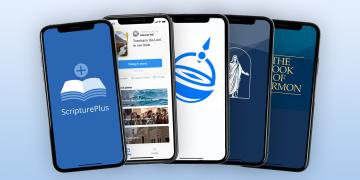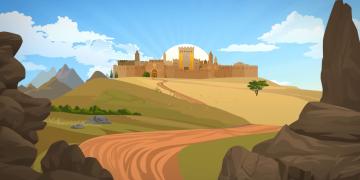You are here
Book of Mormon Central is in the process of migrating to our new Scripture Central website.
We ask for your patience during this transition. Over the coming weeks, all pages of bookofmormoncentral.org will be redirected to their corresponding page on scripturecentral.org, resulting in minimal disruption.
The Church History Department of The Church of Jesus Christ of Latter-day Saints has released a new video exploring Joseph Smith’s use of seer stones in the translation process of the Book of Mormon. In the video (“Seer Stones and the Translation of the Book of Mormon”), Mason Allred interviews Dr. Mark Ashurst-McGee of the Joseph Smith Papers Project concerning “the various historical accounts of the Book of Mormon translation process.” Although we do not fully understand precisely how the Book of Mormon was translated, the surviving historical sources discussed by Allred and Ashurst-McGee do give us enough details to reconstruct a fairly reliable account of the miraculous process.
For starters, Dr. Ashurst-McGee explains that statements and recollections made by the Prophet Joseph Smith and his close associates–––including his wife Emma Smith, his friends Martin Harris and David Whitmer, and others–––make it clear that the instruments utilized in the translation of the Book of Mormon included the Nephite “interpreters” (Mosiah 8:13,19; 28:20; Alma 37:21,24)–––later designated the “Urim and Thummum” (Joseph Smith—History 1:35,42,52,59,62)–––and another seer stone which Joseph began using at some point during the translation “for convenience.” This seer stone (and sometimes the Nephite interpreters as well) he would place into the bottom of a hat which he then peered into to block out extraneous light, since apparently the stones glowed or shined while Joseph utilized them in translating.
Speaking of the historical descriptions of the Prophet burying his face in the hat to view the shining translation instrument(s), Dr. Ashurst-McGee acknowledges that “it’s an image we’re unfamiliar with.” Nevertheless, he explains that “it’s actually not that strange. [Joseph is] trying to block out light. That’s the point.” To help us make sense of this seemingly perplexing method, Dr. Ashurst-McGee offers a modern comparison. “It’s like on a really sunny day when you get a text and you pull out your cellphone [but] you can’t see it because of the sun, [so] you make shade [and] you block out the light so you can see what it says. It’s the same kind of idea.”
Ultimately, Dr. Ashurst-McGee reminds us, the Book of Mormon wasn’t translated “in just one way,” but rather “was translated in different ways at different times.” This should urge us to be cautious in our approach to understanding how the Book of Mormon was translated, especially the matter of which translation instrument or method was used and at which time. Thankfully though, the Church has published some recent articles further discussing the topic of Joseph Smith’s use of seer stones and the translation of the Book of Mormon (see “Joseph the Seer”; “Book of Mormon Translation”). Additionally, we at Book of Mormon Central have published a number of KnoWhy articles on the same topic, including:
- Why Did the Book of Mormon Come Forth as a Miracle?
- Why Was a Stone Used as an Aid in Translating the Book of Mormon?
- Were Joseph Smith’s Translation Instruments Like the Israelite Urim and Thummim?
- Which Nephite King Had the Gift of Interpretation?
- Why is a Seer Greater than a Prophet?
We will likely never fully understand how Joseph Smith translated the Book of Mormon. Indeed–––perhaps in part because of the sacred nature of the translation of the Book of Mormon, and perhaps in part because the world cannot easily comprehend or accept divine miracles–––the Prophet himself once indicated that “it was not intended to tell the world all the particulars of the coming forth of the Book of Mormon.” Whatever the reason for this reticence, we are blessed by both inspired teachings of Church leaders and the scholarship of faithful, diligent historians (such as those associated with the Joseph Smith Papers Project) to know enough to be confident that the coming forth of the Book of Mormon was indeed “a marvelous work and a wonder” (Isaiah 29:14; 2 Nephi 27:26).
Note: some slight emendations were made in the transcription of the video above for the purposes of readability.
Subscribe
Get the latest updates on Book of Mormon topics and research for free


